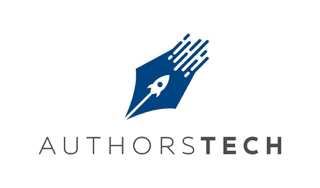
How To Write a Killer Book Introduction in 4 Easy Steps
The way we consume books may have changed greatly over the last decade, but a great book is still a great book, no matter which way you analyse it. As a writer, I always aim for greatness. But a potential reader may never see that clever turn of phrase on page 200 if I don't hook 'em with a great book introduction.
One slip-up, one disconnect and that potential reader - heck, book buyer! - is gone. Even the most successful writer could have nightmares about this stuff. These tips and tactics, which include some of my favorite tech tools for writers, are some of my favorites for creating can't-put-it-down book intros that sell books - enjoy!
Make Tech Tools Do the Heavy Lifting for You
I became a writer for the love of words. Then there is the creative freedom, the fascinating research, the chance to get lost in a new topic until I know it inside and out....what I did not become a writer for is to wrangle with the small stuff. In fact, if left unattended too long, the small stuff can quickly become the big ugly stuff that sucks my creativity right out of my soul.
So I turn to technology to make sure that never happens. These are my favorites:
Evernote. Evernote is like carrying a teensy tiny journal with me everywhere I go. Whatever I want to save and catalogue, whether it is a newspaper headline, a photo, a voice note, a coffeeshop with really fast internet, I can tuck it into Evernote for easy retrieval.
Freedom.This app is like your writing time accountability partner. I use it when I can't trust myself to stick to my own schedule. It will virtually chain me to my word processing program by preventing me from going anywhere else interesting online.
Use the Book Introduction to Make Your Work Essential to the Reader
This tactic is really more about economic psychology than great writing. Why did you buy the last book you bought? Why did you upgrade to the paid version of the free app you were using? The answers are probably surprisingly similar: because there was something in it for you, something to better your life, make you smile, ease your stress, fill a hole you had only just then realized was empty.
A successful (bestselling) book introduction operates on the same premise. You are trying to establish a connection, a relationship, between the book and the reader that will haunt them like a star-crossed romance if they put your book down and walk away. So your job is to make your book so essential in the introduction that your reader won't risk putting it back down on the shelf. Nope.
Tailor the Introduction to the Book Type
I like to think of this tactic as "making the reader a promise and then keeping it." This works for any type of book. For example, if your book is about getting out of debt, you need to convince your reader from page one that your book can help them get out of debt faster than any other book out there.
If your book is a historical romance, you need to use the intro to put your reader into the time and place right away - so much so that they immediately believe the next few hundred pages have an unforgettable, timeless story to tell.
It doesn't matter what type of book you are working on. What matters is that your introduction matches your book type seamlessly so your reader still trusts you as much on page 300 as she did on page 1.
Create Your Ideal Customer and Write the Introduction to Them
No book introduction can be all things to all people. In the same way that a car manufacturer creates a "persona," or "ideal customer," and models all ads and sales copy on that persona, so too must you create your ideal reader for your book. Your persona should be as detailed as you can make it. You can also create more than one persona if your topic has the potential to connect with several different markets.
No book introduction can be all things to all people. Speak to your ideal reader!
For instance, science fiction enthusiasts may never even gravitate to the section of the book store that contains your book on keeping chickens for fun and profit. The folks you need to connect with those who are interested in keeping chickens, eating organic eggs and meat, cooking naturally, farming, living sustainably, et al. - or could be with a little extra incentive.
So, jot down notes on who your ideal reader is, what questions and concerns they have, their annual income (if you know it), what they need to feel like they can trust you as the writer, and then write the introduction to cover each of these key points.
Like a great book, a great introduction can take time and tweaking. Don't rush yourself and don't procrastinate either. Have confidence in yourself. I always give myself a pep talk before I write the introduction to a new book. I say to myself, "You thought up this great topic and you did the work to bring it to life. You are more qualified than anyone else on this planet to introduce this book to new people!"
This works for me. It helps me shake off my non-literary fears (about marketing and sales figures and best-seller lists) and get back to what I know I do best - writing killer copy that will make my new book get plenty of loyal new readers!

